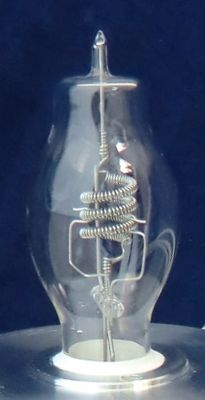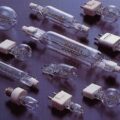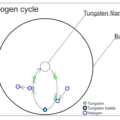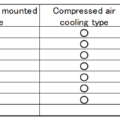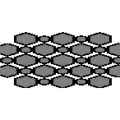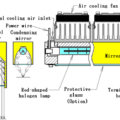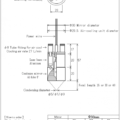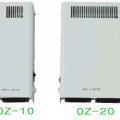석영 유리 밸브에 관하서
할로겐 램프의 밸브는 할로겐 사이클의 관계로 점등시 250℃ 이상의 내열 유리여야 합니다. 또한 밸브 내의 불활성 가스와 할로겐 가스는 1×10^5~4×10^5Pa의 고압으로 봉입되어 점등 중의 압력은 이 1.3배~7.0배에 달합니다. 이것으로부터 석영 유리가 사용됩니다. 석영 유리는 열팽창률이 매우 낮은 소재이기 때문에 유리 표면에 온도차가 있어도 열 응력이 작아져 급격한 온도 변화에도 대응할 수 있습니다. 석영 유리는 순도가 높은 물질이지만 불순물을 포함합니다. 이 불순물의 침출은 온도와 관계가 높고, 석영 유리의 경우 800℃ 전후부터 불순물의 침출이나 봉입 가스의 침입이 시작됩니다. 할로겐 램프의 밸브 온도를 800℃ 이하, 가능하면 700℃ 이하로 억제해야 하는 것은 불순물과 온도의 관계로부터입니다. 할로겐 램프 내부의 가스 밸런스가 변화하면 흑화 현상이나 저수명의 원인이 됩니다.
이 불순물 중에서 약간 물이 혼입하고 있습니다. 유리는 내수성이 있는 소재로 유리내의 물을 육안으로 확인할 수 없고, 통상은 문제가 되지 않는다. 이 물은 고온시에는 수산기(히드록시기)로서 존재합니다. 수산기는 600℃ 이상이 되면 램프내에 녹아 물이 약간이라도 워터 사이클을 일으켜 텅스텐의 소모를 조장합니다. 워터 사이클은 수증기가 고온 텅스텐 표면에서 분해되어 산화 텅스텐과 원자 수소가됩니다. 산화 텅스텐은 증발하여 유리 벽에 부착하고 원자 수소는이 산화물에서 산소를 빼앗아 수증기로 돌아갑니다. 이 반복으로 텅스텐의 증발을 반복 소모를 빨리 이해한 현상입니다.
이때 할로겐 램프에서는 할로겐 사이클도 동시에 일어나고 있습니다. 할로겐 사이클에 의한 텅스텐 필라멘트의 재부착과 워터 사이클에 의한 텅스텐 필라멘트의 증발로 단시간에 텅스텐 필라멘트 표면은 요철이 되어 단선해 버립니다. 그 때문에, 사용하는 석영 유리는, 물의 함유량이 적은 것이 가장 좋다. 또한 할로겐 램프로 가공하는 공정에서도 물(산소)이 들어가지 않는 제조 공정이 이상적입니다. 혼입했을 경우의 제거 방법은 800도 이상의 열처리나 산소용 게터를 램프 내에 넣어 흡착시키는 방법도 있습니다.
석영 유리의 표면 세정 처리
석영 유리 표면이 조금이라도 더러움이 부착된 채로 가열하면 그 더러움이 유리 내에 침투해 강도의 저하나 할로겐 사이클의 저해, 유리의 투명도가 손실되는 실투 현상을 일으키는 원인이 됩니다.
그 때문에, 세정 처리를 실시할 필요가 있습니다. . 불화 수소산으로 석영 유리 표면을 녹여 얼룩마다 제거합니다. 5%~10%의 불화수소산에 수분간 침지하고, 순수로 불화수소산을 충분히 씻어냅니다. 불화수소산은 인체에 매우 위험한 약품이므로, 보다 위험이 적은 불화암모늄이 사용되는 것이 많습니다.
실투 등의 발생이 최대한 줄이기 위해 석영 유리는 맨손으로 취급하지 않고, 더러운 경우 알코올 등으로 닦아 사용합니다.
석영 유리 가공에 관하서
석영유리의 가공은 가스버너 등으로 고온(약 2000℃)으로 하여 카본이나 금속봉 등을 밀어 변형시키거나 금속제의 금형으로 프레스하거나 하여 가공합니다.
가스 버너는 산소 – 수소 불꽃이 이상적입니다. 가스 버너에는 산소와 수소를 미리 혼합해 두고, 그것을 노즐로부터 고속으로 분출해 연소시키는 「근원 혼합형 가스 버너」와, 산소를 공기 중에 불어 꺼내, 그 산소에 수소를 말려들어 혼합 , 점화하는 “첨단 혼합 형 가스 버너”가 있습니다. 후자는 화염 유속이 작기 때문에 넓은 면적의 석영 가공에 적합합니다.
근원 혼합형은 노즐내를 고속류로 하는 것으로 연소가 노즐내로 진입하는 것을 막고 있으므로, 기본적으로 불꽃도 고속류가 됩니다. 이 가스 버너 형식은 작은 면적 가열에 적합합니다.
만약 이 근원 혼합형 가스 버너로 노즐의 유속이 저하하면 연소가 노즐 내에까지 들어가(역화 현상), 가스 버너 내의 산소-수소 혼합 기체가 단번에 폭발 연소하여 큰 폭발음이 발생합니다. 이 상태로 방치하면 가스 혼합기 내에서 연소가 계속되고 있는 경우가 있어, 그렇게 되면 혼합기 부근이 소손되는 일이 됩니다.
석영 가공에서도 경제적인 이유로 메탄 가스나 프로판 가스와 산소의 혼합염이 사용되는 일도 있습니다. 이 경우, 이들 연료 가스는 수소만큼 신속하게 산소와 혼합되지 않고 연소 온도도 낮다. 그 때문에, 「근원 혼합식 가스 버너」가 대부분입니다.
넓은 면적을 가열하려면 다수의 노즐 구멍으로 구성된 가스 버너가 됩니다. 그리고 가열 포인트는 노즐로부터 꽤 가깝고, 불꽃의 유속이 빠르기 때문에 가열 연화한 유리를 눌러 변형시키기 쉬운 경향이 있습니다. 이 가스 버너는 갑자기 가스를 멈추면 노즐의 유속이 저하되어 역화되어 폭발음이 나옵니다.
회피하기 위해서는 먼저 산소쪽을 천천히 멈추고 나서 연료가스를 멈추거나 먼저 연료가스를 멈추고 불어 사라지는 방법이 있습니다. 어느 쪽이든 유속이 떨어지므로 역화가 일어나기 쉬워져, 신속한 차단 동작도 할 수 없습니다. 신속한 차단 동작을 하려면, 연소 가스를 멈추는 동시에 공기를 믹서에 불어 넣어 노즐의 유속을 저하시키지 않고 불어내는 것입니다.
이 가스 버너는 점화도 주의가 필요합니다. 연료 가스를 먼저 내고 불을 붙인 다음 산소를 내는지 보통이지만 신속한 점화를 할 수 없습니다. 연료 가스와 산소를 미리 설정해 둔 유량으로 동시에 배출하면, 점화 전용 버너(수소염)로 점화하는 방법이 빈번한 점화에 대응할 수 있습니다.
유리가 고온이 되어 충분히 연화하면 가공을 할 수 있습니다. 금속 금형에서의 프레스 가공에서는 금속에 석영 유리가 부착하는 경우가 있습니다. 이것을 막는 이형재로서는 카본이 유효합니다. 탄소는 고온의 석영에 접하면 그것을 환원시켜 COx를 발생시켜 강력하게 이형합니다. 탄소의 보급 방법으로서는 일반적으로는 기름을 도포합니다.
석영을 강열하고 연화시키면 그 주변부에 실리카가 붙어 백색 탁해집니다. 이것은 가열에 의해 석영이 증발하여 저온부에 부착하는 것입니다. 이것을 가능한 한 방지하기 위해서는 실리카가 부착하기 쉬운 부분에 에어나 가스 버너의 원화를 맞추는 방법이 있습니다.
석영의 증발은 환원염의 경우에 심해진다. 이것은 석영이 환원되어 SiO가 되는 것으로 증발하기 쉬워지기 때문이라고 생각됩니다. 따라서 가공용의 화염은 산소 과잉염에 헹구면 실리카는 부착하기 어려워집니다. 그러나 이러한 화염은 유속에 비해 화력이 약해져 환원 작용이 없기 때문에 밀봉 작업에서는 몰리브덴박이 산화되어 끊기기 쉬운 어려움이 있습니다.
부착된 실리카는 산소 과잉염으로 구워 날리거나, 불화수소산 등으로 제거하게 됩니다. 단, 봉지 후의 램프는 할 수 없습니다.
덧붙여 프레스 가공은 가능한 한 단시간에 실시할 필요가 있습니다. 장시간 프레스하면 급격히 석영의 온도가 내려 균열이나 강한 왜곡을 남깁니다.
석영 유리 가공 후의 왜곡 제거에 관하서서
석영 유리의 가공을 실시하면, 가공시의 온도 분포에 의해 변형이 생깁니다. 왜곡이란 석영 내부의 분자간에 압축력이나 인장력이 잔류한 상태입니다. 왜곡은 편광을 이용한 「왜곡계」로 시각적으로 확인할 수 있습니다.
이 잔류 변형은 석영 유리의 강도를 저하시키기 때문에, 램프의 점등중의 내압을 견디지 않고 파열하거나, 균열의 발생을 초래해 봉입 가스의 누출에 의한 램프의 초기 불량도 초래합니다. 또 램프 교환 작업시에, 어떠한 힘도 가하지 않은데 깨져 버린다고 하는 일도 일어납니다.
잔류 왜곡을 취하기 위해 어닐링을 수행합니다. 가공부를 서냉점 이상의 온도로 유지하고 재가열한 후에 다시 변형이 들어가지 않도록 천천히 냉각함으로써 상당히 잔류 변형을 줄일 수 있습니다. 최적의 유지 시간과 냉각 속도는 소재의 모양에 따라 다릅니다. 고온에서 가열하는 것 프레스 가공 등으로 생겨 버린 작은 균열을 구워서 무해화한다는 장점도 있습니다.
특별한 변형 제거로를 갖추지 않아도, 이러한 점을 주의해서 작업하면 실해가 없는 정도에는 변형을 제외합니다. 그러나 왜계로 확인할 수 없을 정도로 완전히 제거하는 것은 어렵습니다.
석영 유리 이외의 유리를 사용한 할로겐 램프
석영 유리 밸브는 할로겐 램프의 밸브 재료로서 필수 조건이 아닙니다. 석영 유리만큼은 아니더라도, 그곳 고온에 견디는 유리(알루미노실리케이트 유리, 붕규산 유리의 일종으로 몰리브덴에 팽창률을 맞춘 것)을 사용해, 호일을 사용하지 않는 통상의 밀봉 방법을 채용한 할로겐 램프 도 존재합니다. 이들은 대량 생산 품종으로 비용을 낮추는 수단으로 채용되고 있습니다. 단, 너무 큰 출력의 할로겐 램프에는 적용할 수 없고, 소량 생산에도 적합하지 않습니다.
 HEAT-TECH 최선의 기술 온라인(on-line) 샵
HEAT-TECH 최선의 기술 온라인(on-line) 샵 
